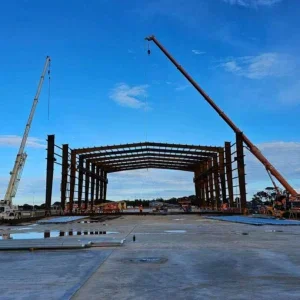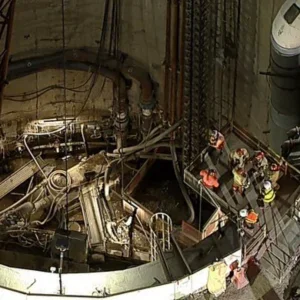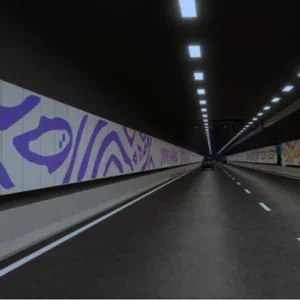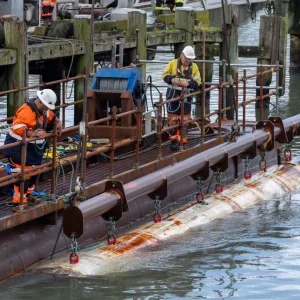City Rail Link (CRL) has suffered “minimal lasting impacts” from recent extreme weather events that have devastated other regions of New Zealand.
At the start of February, heavy rain caused unprecedented flooding in Auckland, and last week the country was battered by Cyclone Gabrielle. The government has just announced a NZ$300m (US$187m) recovery package following the cyclone, which has so far claimed 11 lives.
Chief executive Dr Sean Sweeney said at the CRL construction sites, extensive flood response planning stood the project in good stead to withstand both the flooding and the cyclone.
The advance cyclone warning allowed CRL and Link Alliance crisis management teams to install additional measures for Cyclone Gabrielle, including dams erected in the Maungawhau/Mount Eden Station tunnels. Other measures included installing extra bunds, pumps across all sites and moving plant and machinery to higher ground.
There have been no reports of significant flooding or wind-related incidents on any sites as a result of Cyclone Gabrielle.
Dr Sweeney singled out the Link Alliance workers who worked through the Friday night before the heavy rain in early February to minimise the impact on what is New Zealand’s largest transport infrastructure project.
“To maintain the highest standards of professionalism in the face of unprecedented flooding, while tunnels were being inundated, speaks to our people’s expertise and bravery,” he said.
At this stage there is no identified damage to infrastructure, permanent works or surrounding ground as a result of the flooding or the cyclone. “This is a direct result of the detailed planning for events such as Auckland has unfortunately recently undergone – the professionalism and bravery of CRL and Link Alliance workers has been tested and found equal to the task,” said Sweeney.
The worst-affected site from the early February flooding was the city-bound cut-and-cover tunnel south of the Maungawhau/Mount Eden Station temporary portal. The storm partially flooded the works and a mobile crane and several elevated work platforms were inundated.
“This area was pumped dry within 48 hours. Other than damage to a waterproofing layer behind a reinforced concrete wall, which we will replace, we haven’t identified any damage to the permanent works,” said Sweeney.

Elsewhere across the CRL, stormwater flowed from the inundated portal area in the city-bound tunnel northwards to the Karang-a-Hape Station. With the weir at the north end, this turned the entire station into a 100mm-deep reservoir.
“Our teams were able to move all but one item of plant to high ground and we were relatively unaffected, other than a general clean-up,” said Sweeney. “The bottom of our temporary access shaft at Mercury Lane is lower than the platforms and ended up about 1000mm deep. Again, after pumping out, we identified no significant damage to the permanent works other than some blocked under-platform drainage that we are cleaning out.”
Te Waihoratiu Station (Aotea) was relatively unaffected, with a minor inflow down the tunnel, but stormwater entered Waitemata (Britomart) Station through a combination of openings in the roof at Te Waihorotiu and from the main Waitemata train portal at the eastern end.
“Our partner Link Alliance has been supporting Auckland Transport by supplying pumps and labour to remove stormwater from the existing station,” said Sweeney.
Link Alliance – comprising City Rail Link Ltd, Vinci Construction Grands Projets, Downer NZ, Soletanche Bachy International NZ, WSP NZ, Aecom New Zealand, and Tonkin + Taylor – completed tunnelling on the project in September last year. CRL comprises a 3.45km twin-tunnel underground rail link up to 42m below Auckland city centre.







